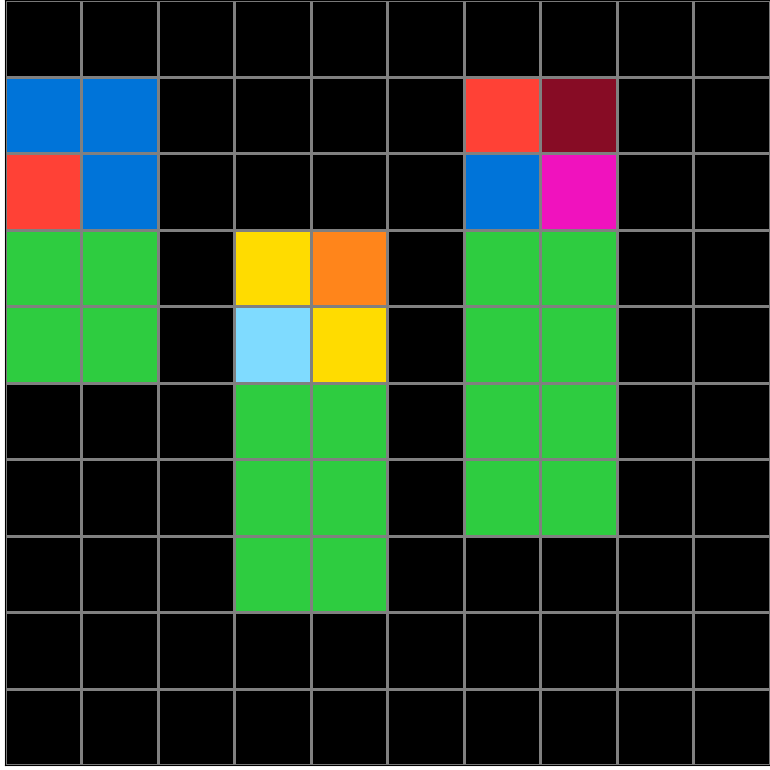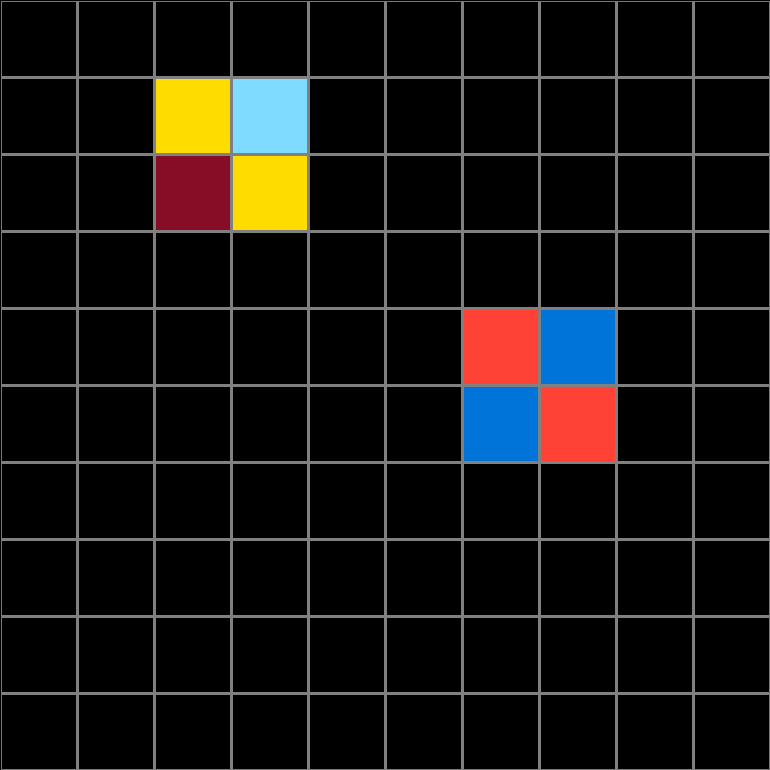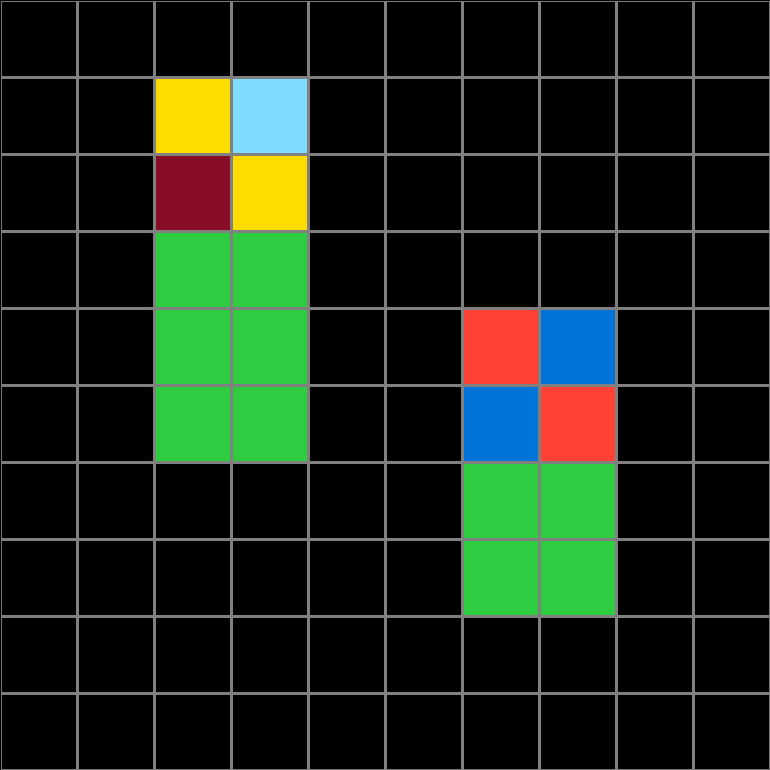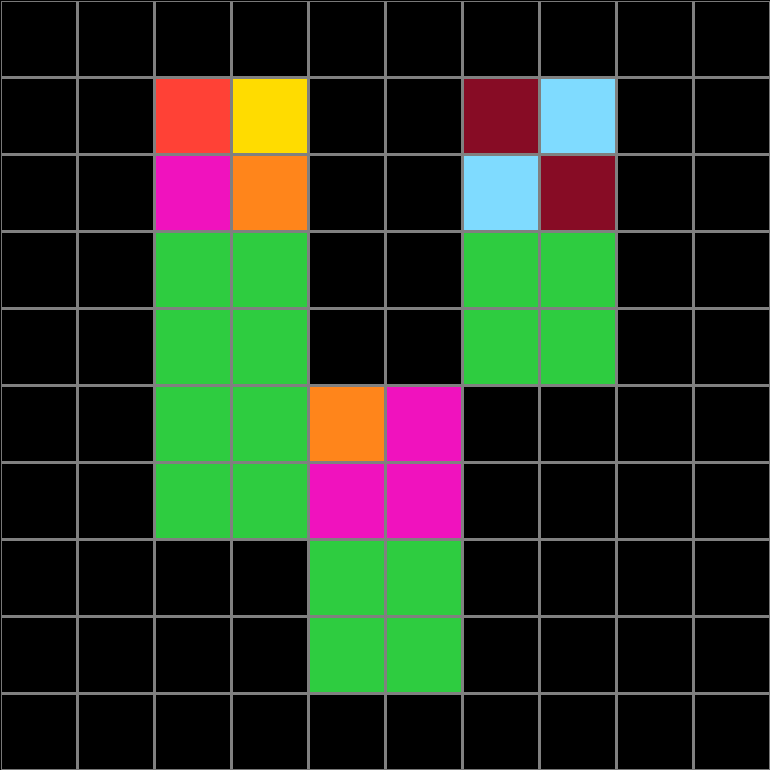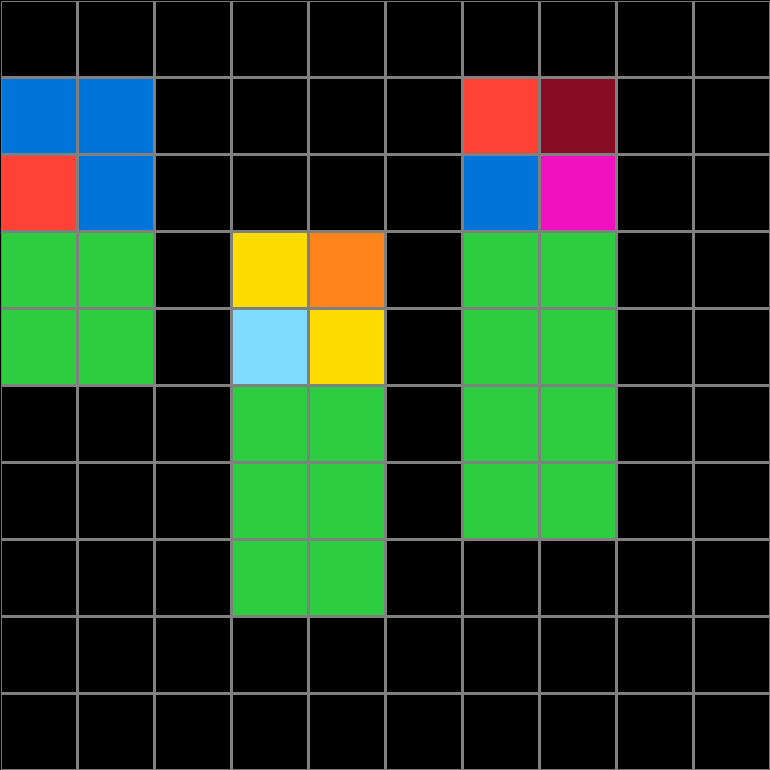Participant 1
Initial description: The number of green boxes is determined by the amount of different colors in the main boxes. For example if there are two different colors then the amount of green boxes is four, if there are three different colors then it requires six green boxes and finally if there are four different colors it requires eight green boxes.
Final description: The number of green boxes is determined by the amount of different colors in the main boxes. For example if there are two different colors then the amount of green boxes is four, if there are three different colors then it requires six green boxes and finally if there are four different colors it requires eight green boxes.
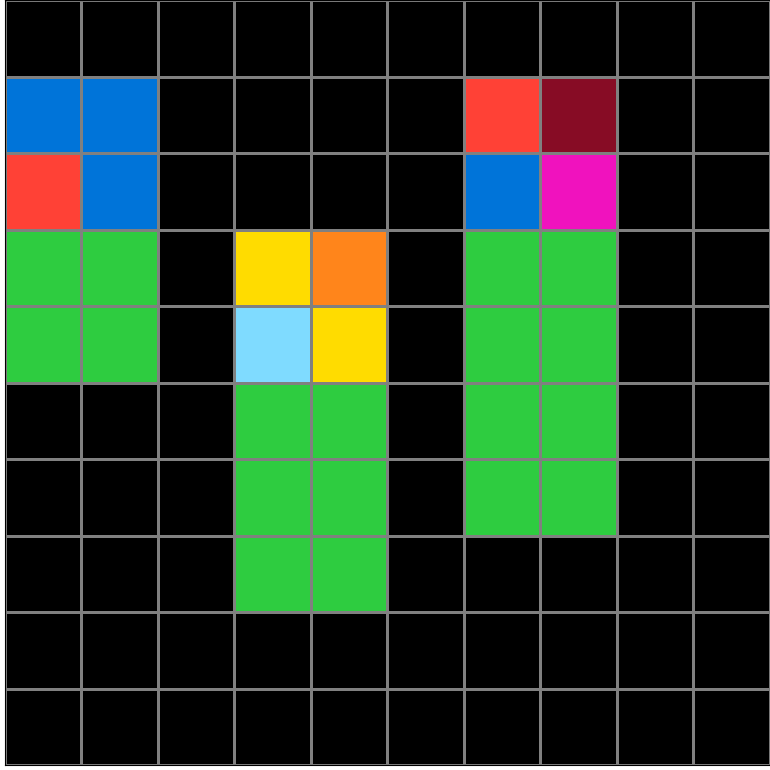
Participant 2
Initial description: Extend green boxes down from the input
Final description: extend green boxes down from the input 2 boxes wide for each amount of different colors. a box with 2 colors is extended 2 boxes down, 3 colors 3 boxes down and 4 colors 4 boxes down.
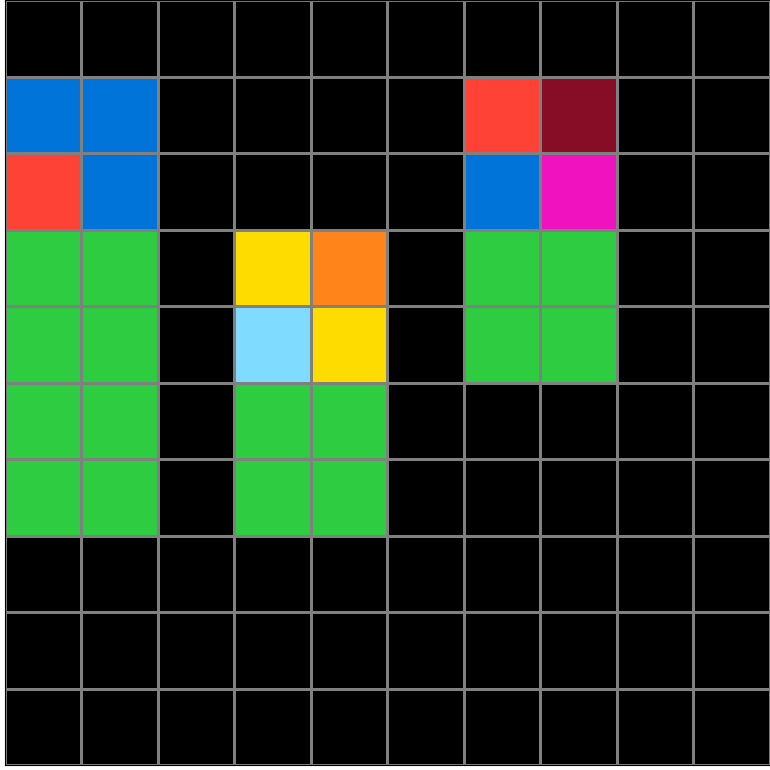


Participant 3
Initial description: Create the exact copy of the test input then count the number of colors that make up each box of colored square. whatever number you get is the amount of green square you will add to the bottom of the colored square vertically.
Final description: Create the exact copy of the test input then count the number of colors that make up each box of colored square. whatever number you get is the amount of green square you will add to the bottom of the colored square vertically.
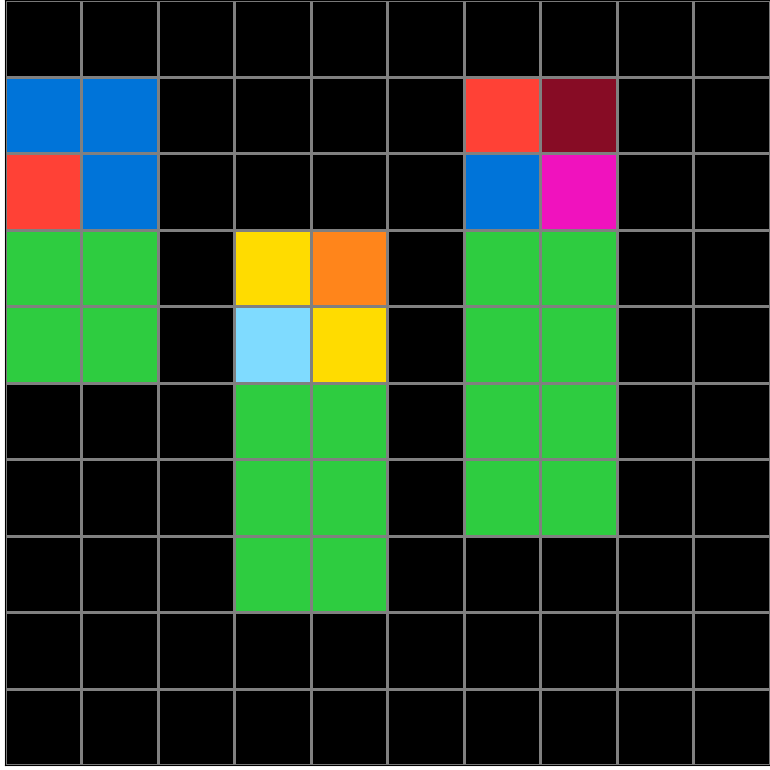
Participant 4
Initial description: I recreated the blocks shown then added the green blocks where the other sections left off.
Final description: I have no idea. I thought I was doing it correctly using example 3

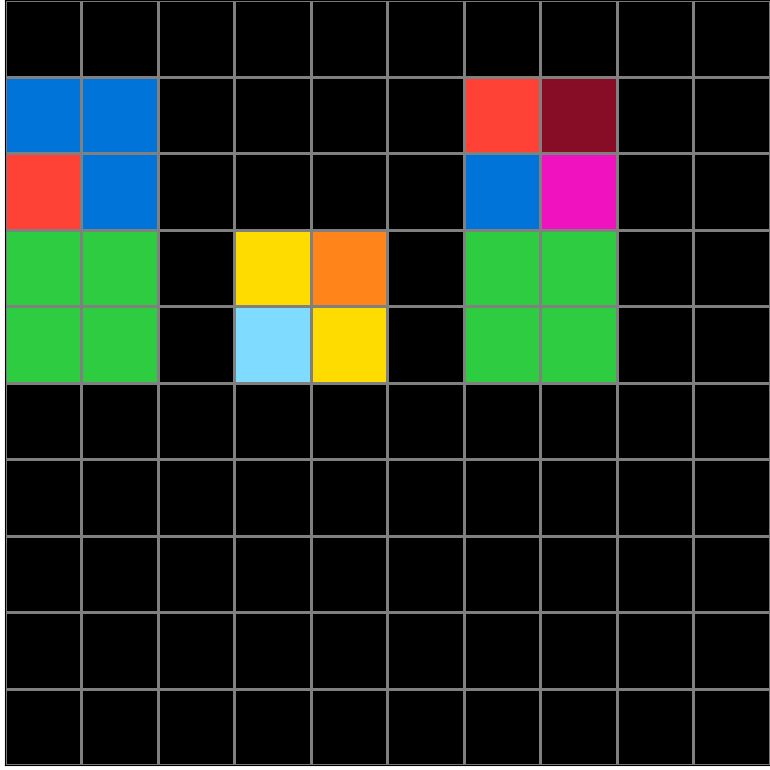

Participant 5
Initial description: the number of colors in the box are changed in the output as green color.
Final description: the number of colors in the box are changed in the output as green color.
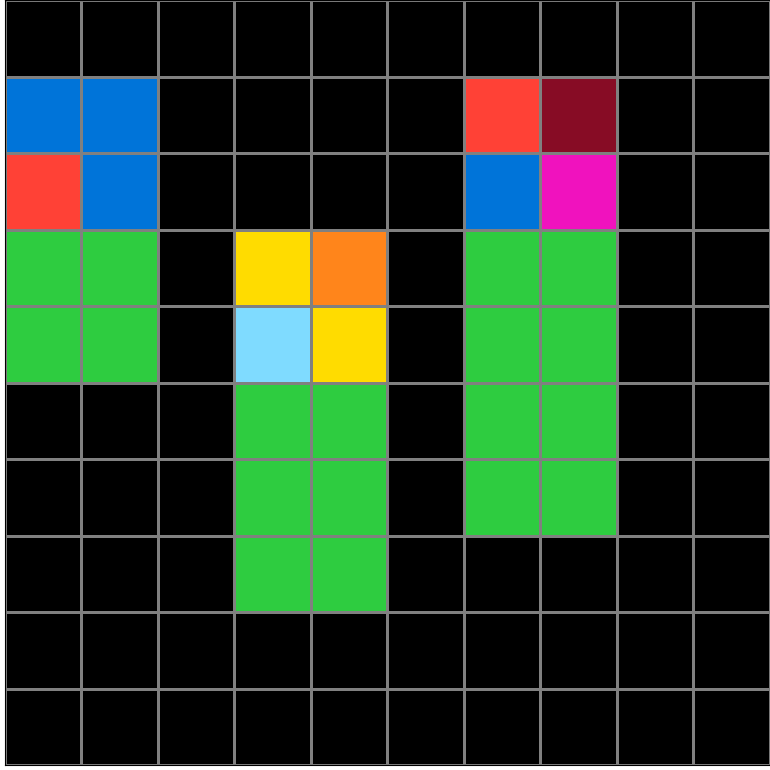
Participant 6
Initial description: I GIVE A OUTPUT BASED ON INPUT GRID
Final description: I GIVE A OUTPUT BASED ON INPUT GRID
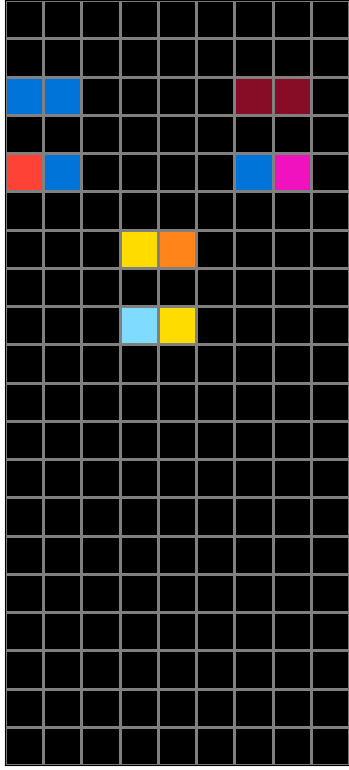
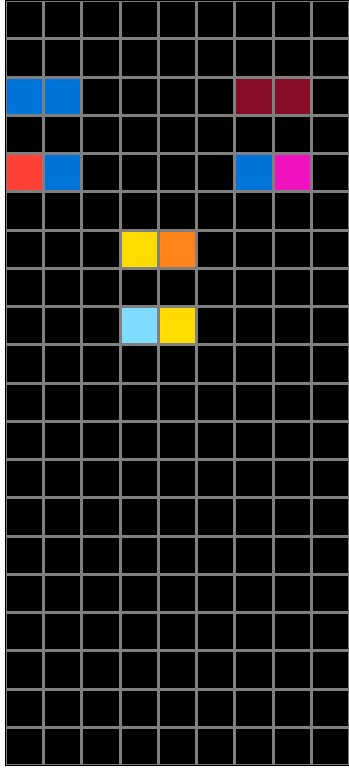

Participant 7
Initial description: Fill the spaces under the 2x2 multi colored squares with 2x1 green rectangles that correlate to how many different colors exist in said multi colored squares multiplied x2. i.e. a square with 4 different colors should have 8 green blocks filled beneath it.
Final description: Fill in 2x1 rows with green under the 2x2 multi colored squares based on how many colors exist in the multi colored square. i.e. three colors in the square means three 2x1 rows should be colored green under the square.

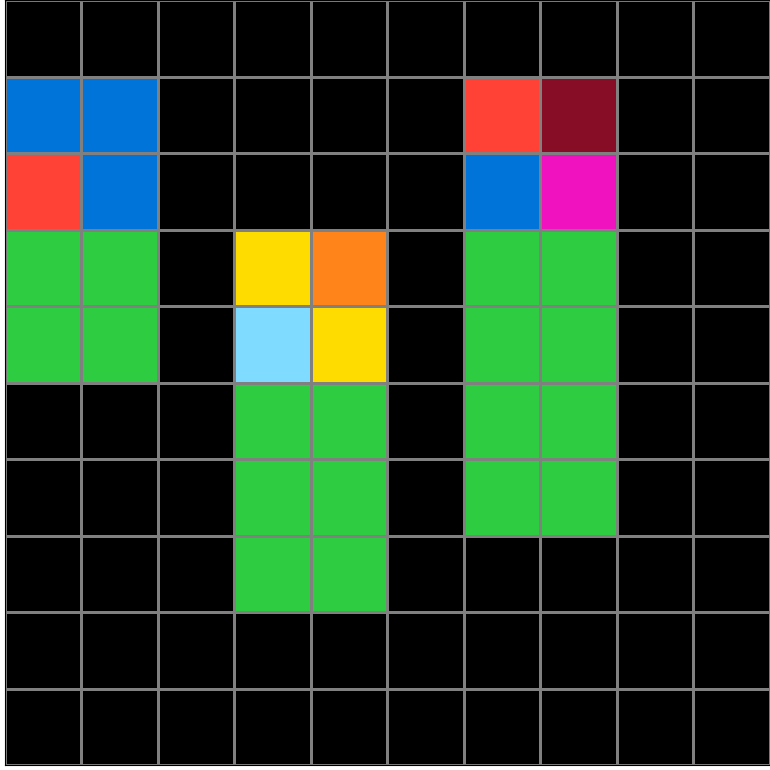
Participant 8
Initial description: Rows of two green cells is connected underneath each box of four input cells. The number of rows of green cells is equal to the number of colors within each box of four input cells.
Final description: Rows of two green cells is connected underneath each box of four input cells. The number of rows of green cells is equal to the number of colors within each box of four input cells.

Participant 9
Initial description: Copy input grid. Place 4 green squares below all 3 test input squares. If it has yellow in it, add another 2 green squares below it.
Final description: I matched the grid. I placed 4 squares of the green below them as shown in the example outputs since they all have 4 squares below them. Now to add extra squares below the first square based on the last example output because there's 3 squares instead of 2.
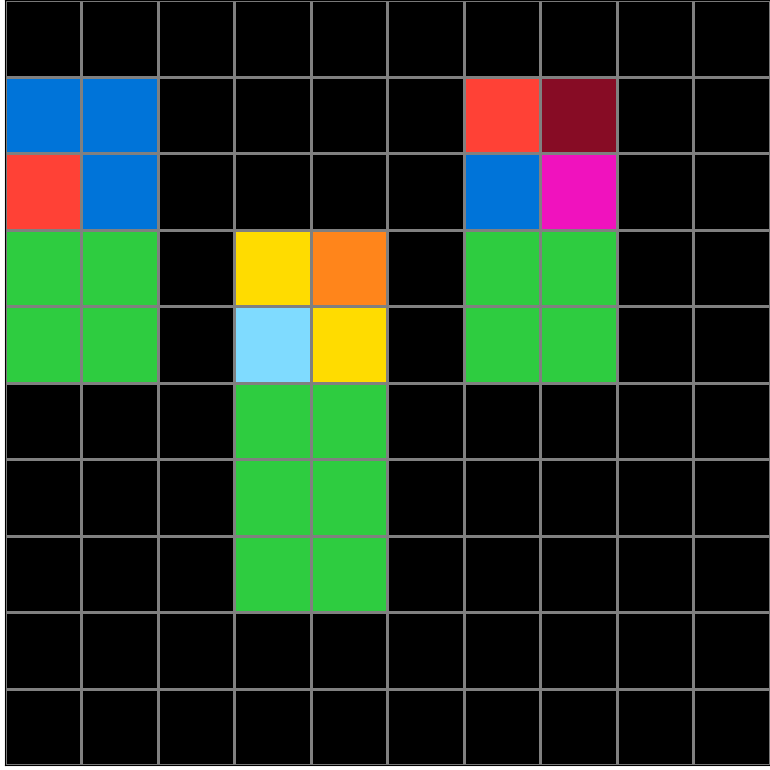

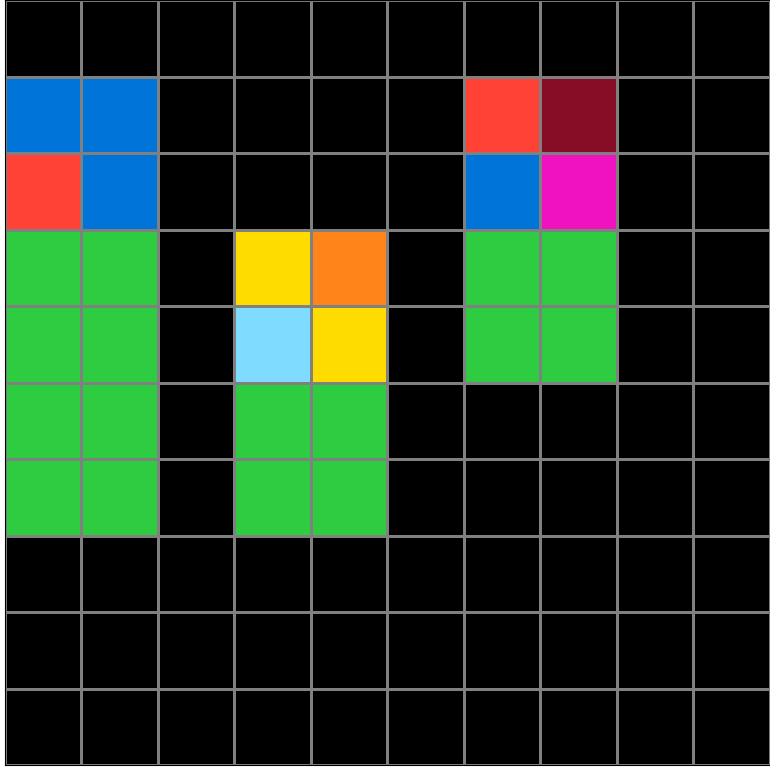
Participant 10
Initial description: The rule seemed to be that the yellow would cause it to have more green blocks below the main blocks.
Final description: The rule was putting green blocks below the main blocks but I could not determine how many. It seemed like yellow as the input would mean more green blocks but I wasn't sure.

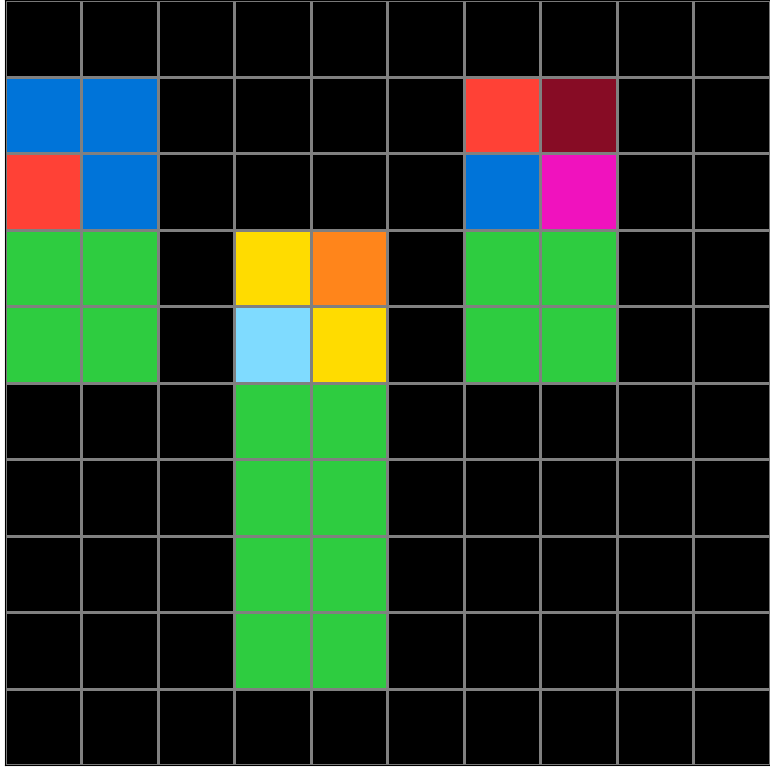
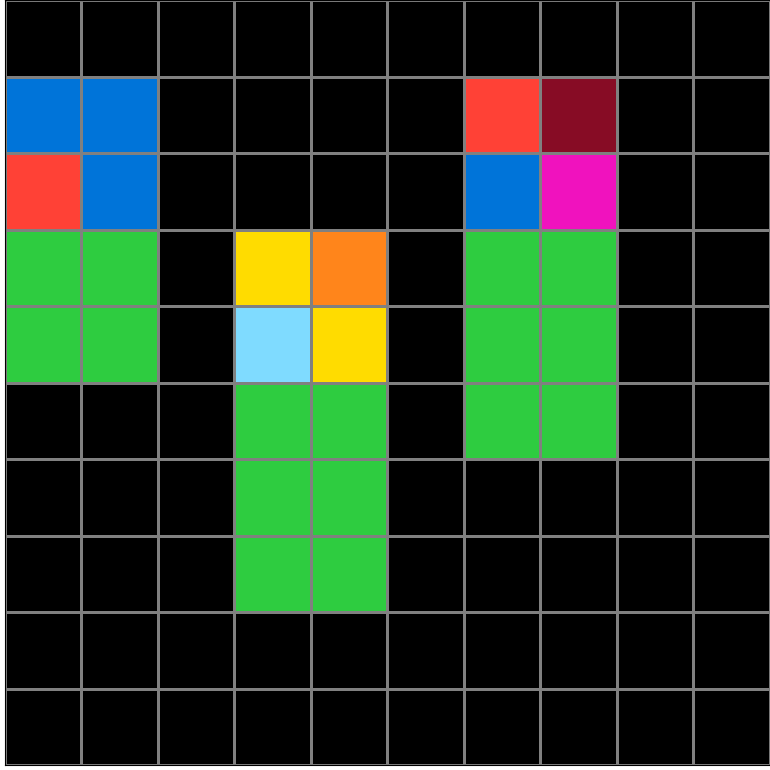
Participant 11
Initial description: If there is 2 colors in the 2x2 block, then there is a 2x2 block of green right under it. if there is 3 colors than it's a 2x3 block of green right under or if it's a 2x4 color block then there is 4 block of green right under it.
Final description: If there is 2 colors in the 2x2 block, then there is a 2x2 block of green right under it. if there is 3 colors than it's a 2x3 block of green right under or if it's a 2x4 color block then there is 4 block of green right under it.
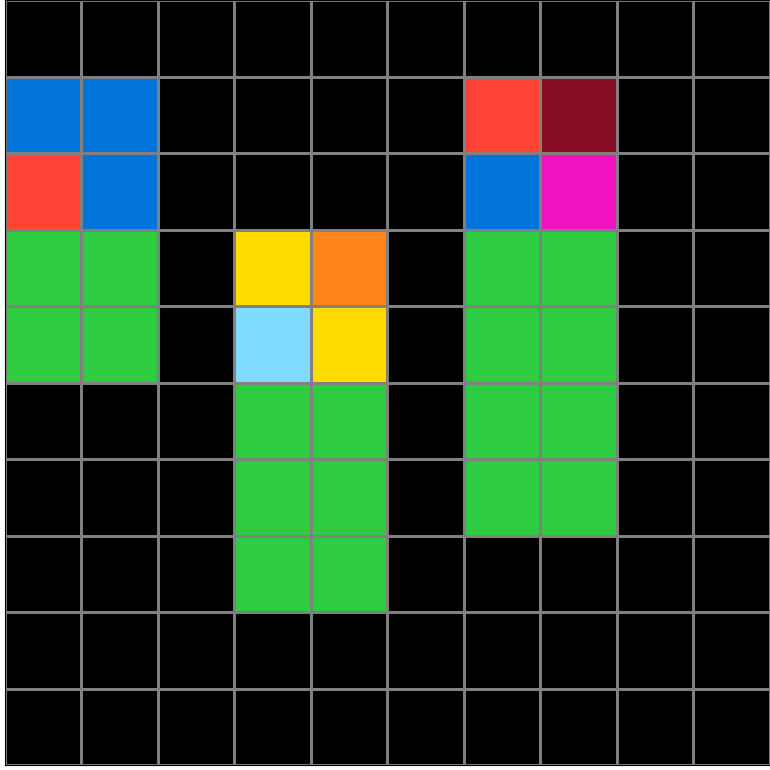
Participant 12
Initial description: If a colored square has a yellow square in the bottom right corner, a 3x2 green rectangle should be placed below the colored square, if a colored square has an orange square in the bottom right corner, a 4x2 green rectangle should be placed below the colored square, and any other color should have a 2x2 green square placed below a colored square.
Final description: A green square of equal size should be placed below each colored square, with the size of the green recentangle changing based on color combinations.
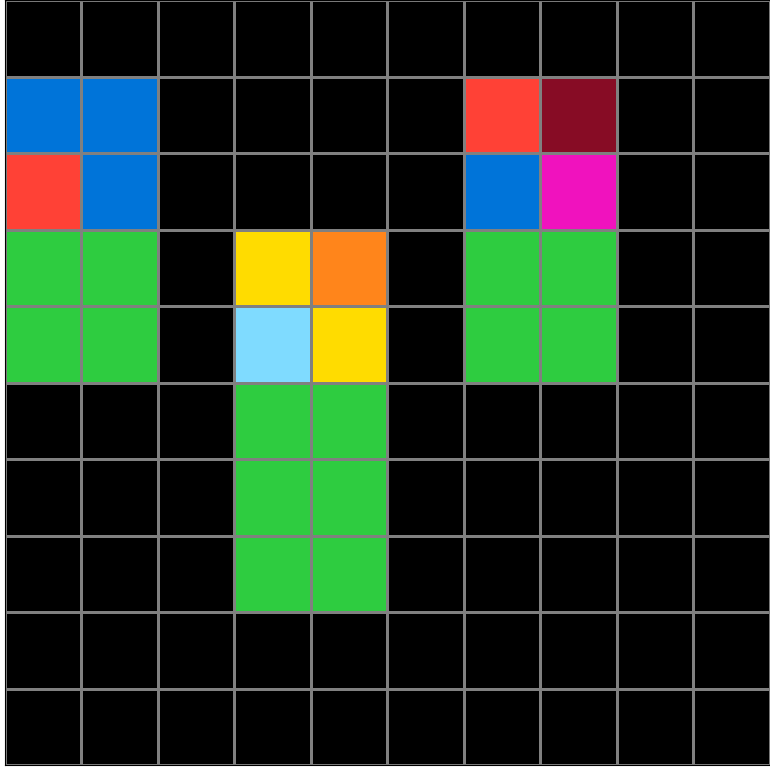
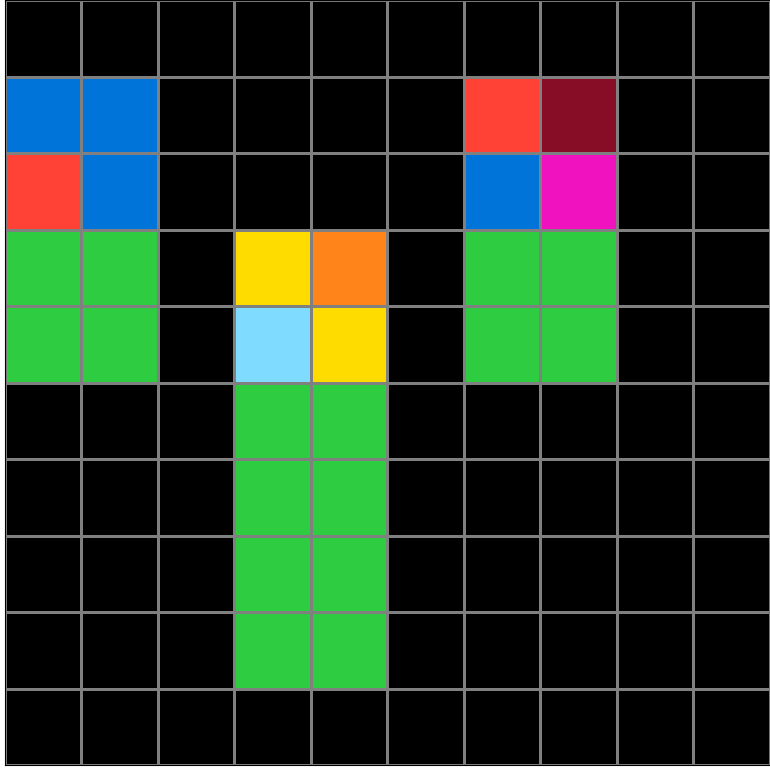

Participant 13
Initial description: Copy the pattern. Add green under each box. The number of green rows you add should be equal to the number of colors in the box above it.
Final description: Copy the pattern. Add green under each box. The number of green rows you add should be equal to the number of colors in the box above it.
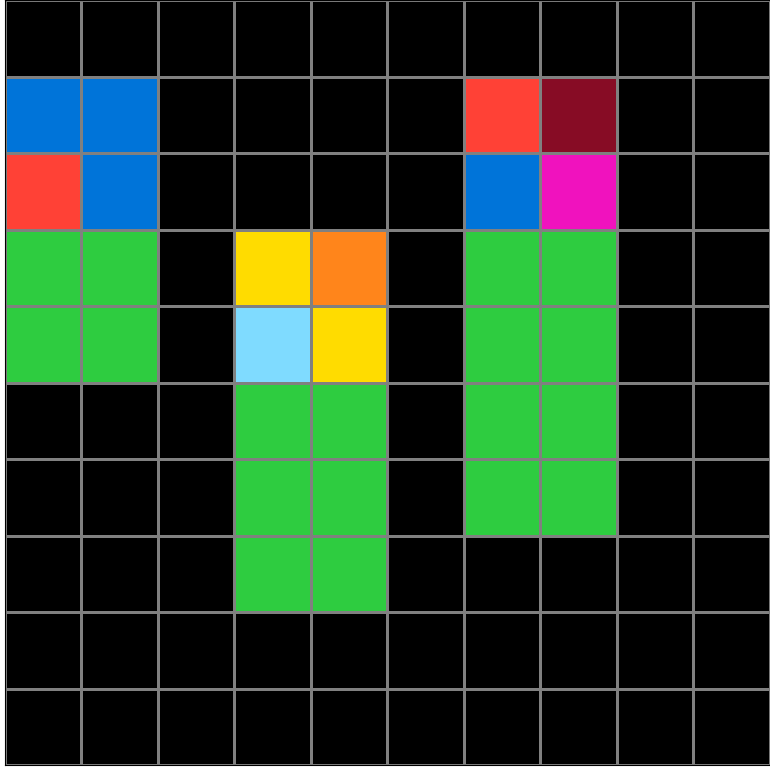
Participant 14
Initial description: each color from the test input is represented by a green row of two blocks
Final description: each color from the test input is represented by a green row of two blocks
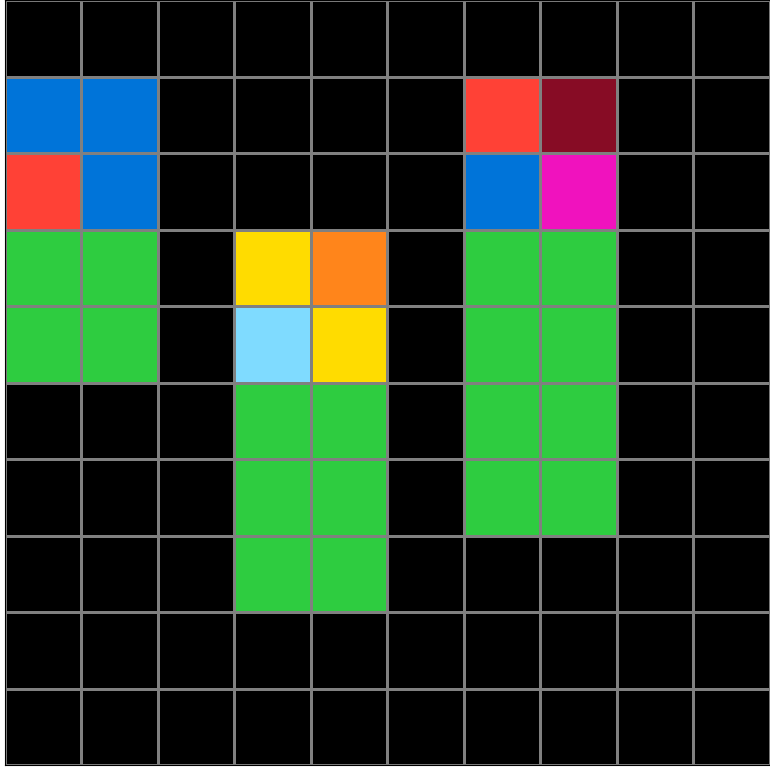
Participant 15
Initial description: I thought I need to add extra column and row of green depending on how many colors are available.
Final description: I thought I need to add extra column and row of green depending on how many colors are available.

Participant 16
Initial description: There's a green box under every box.
Final description: I couldn't find the pattern I guess. I tried to follow example 3.

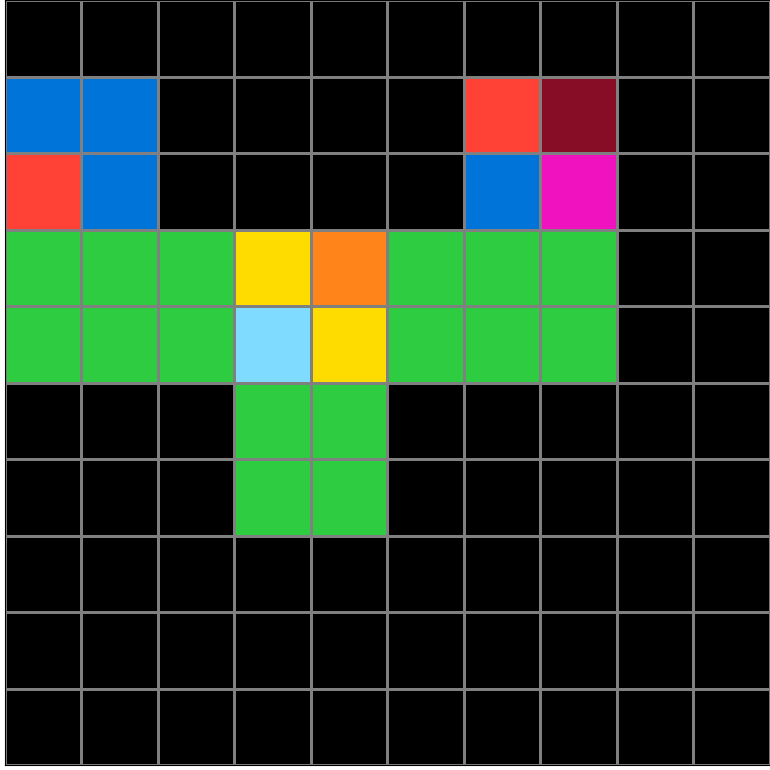

Participant 17
Initial description: everything gets 2 rows of green, cubes with yellow get 1 extra row per other cube
Final description: Thought it was adding green to the cube with yellow, not sure what the rule is
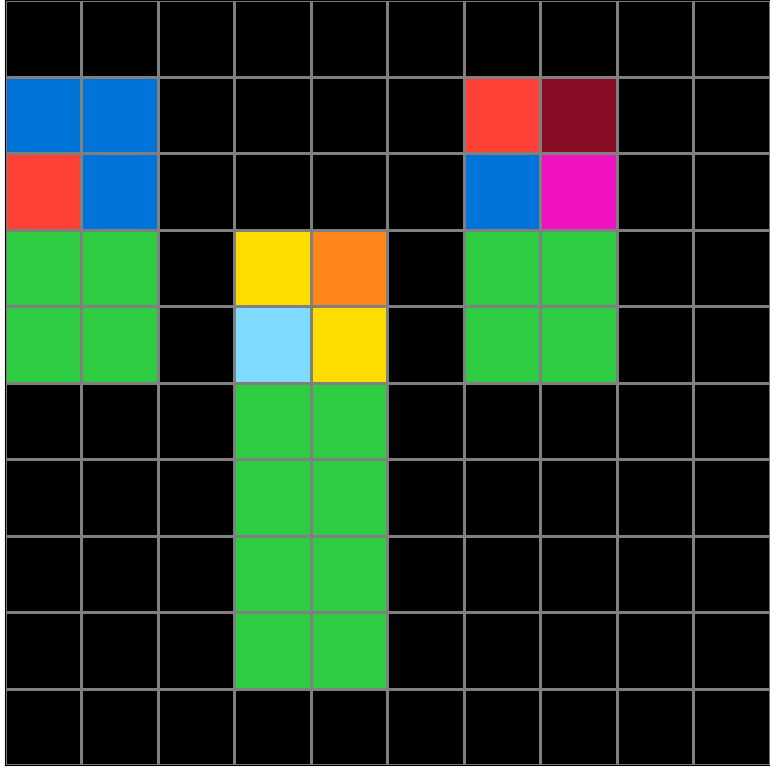
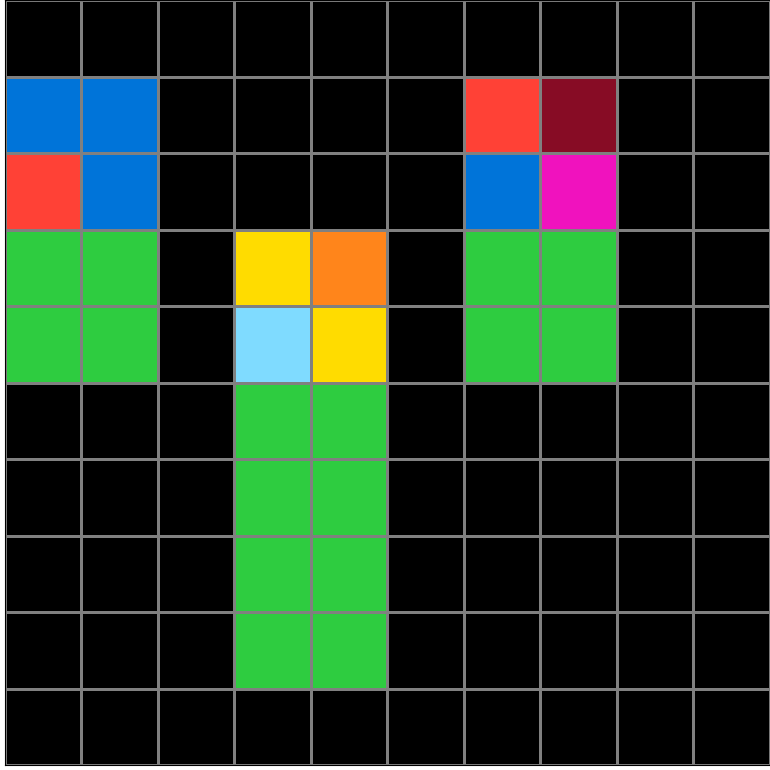
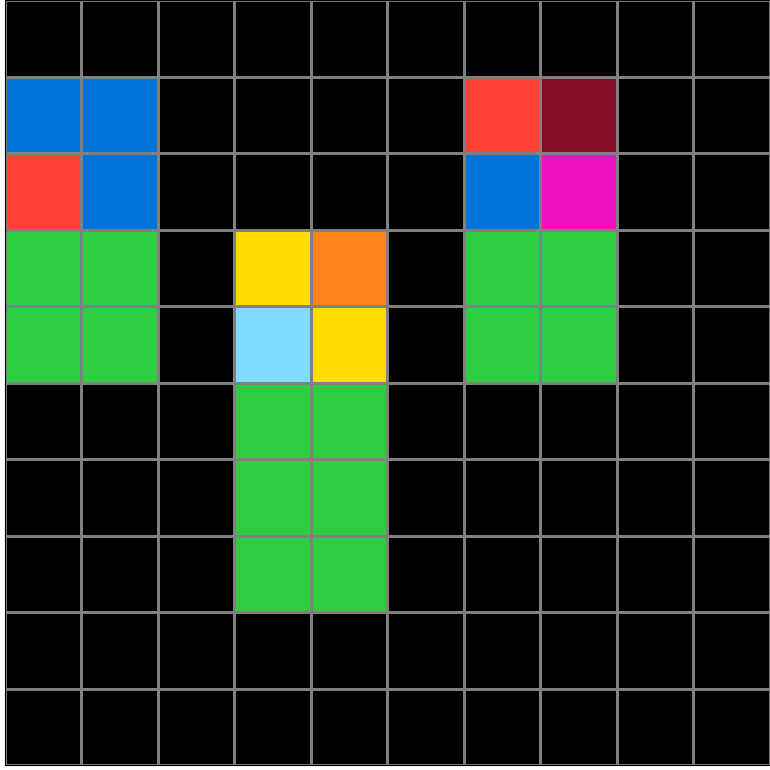
Participant 18
Initial description: This progress was good.
Final description: This process was good.
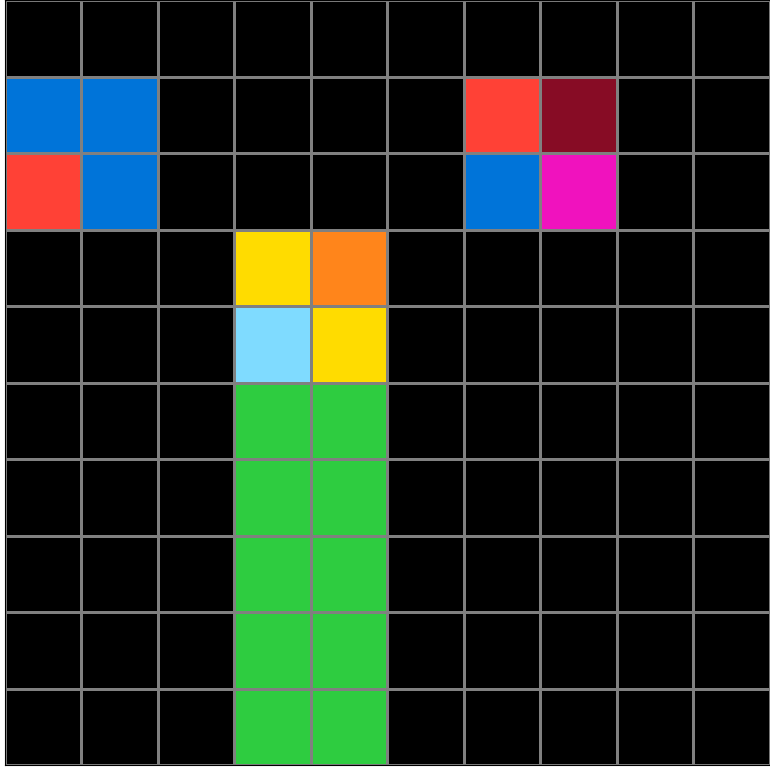
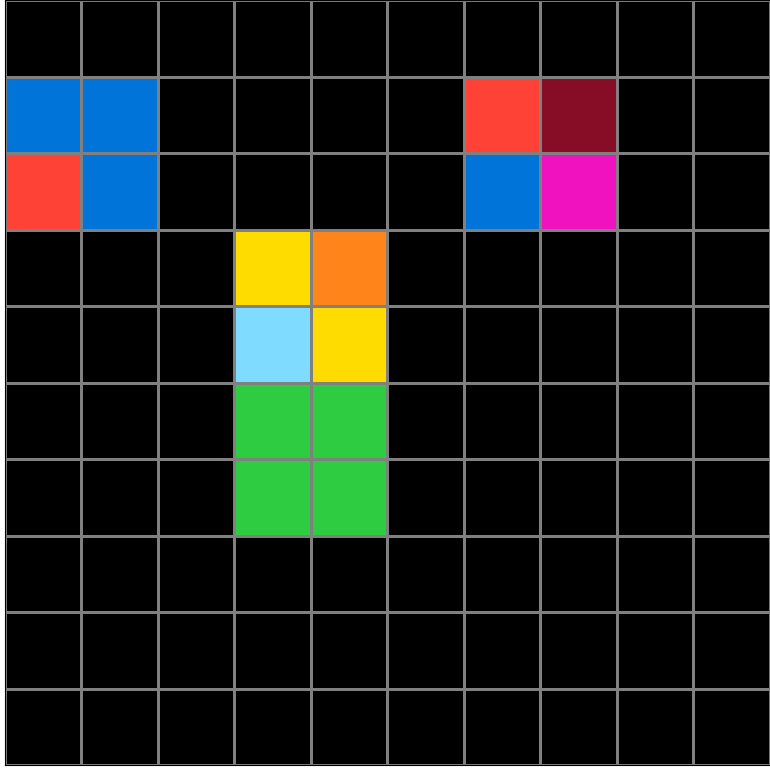
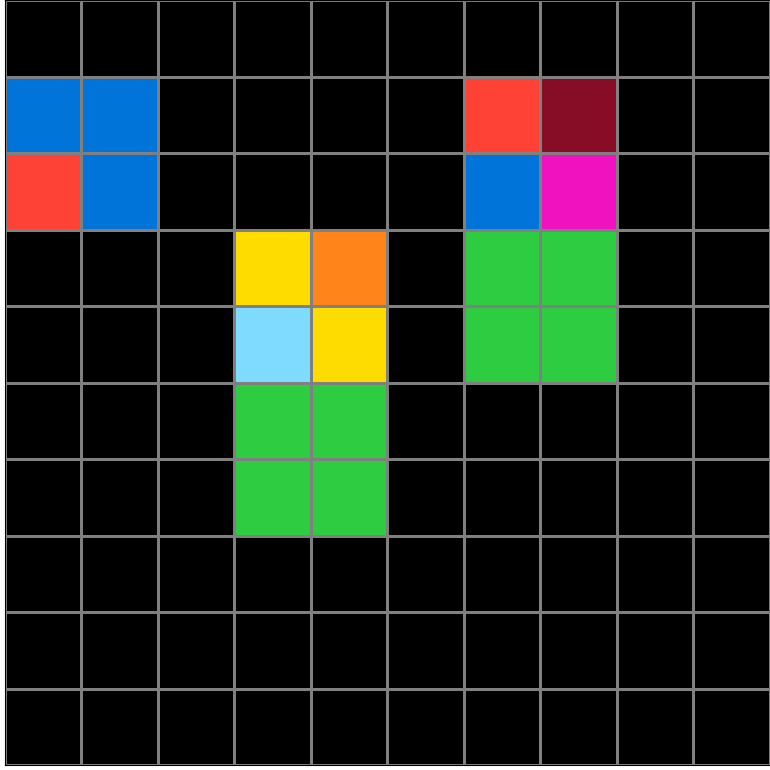
Participant 19
Initial description: If there are 2 colors in initial design add 4 green cells below. If there are 3 colors in initial design add 6 green cells below.
Final description: Count the colors in the initial design. For 2 colors add a block of 4 green below design. for 3 colors add 6 green below, for 4 colors add 8 below.
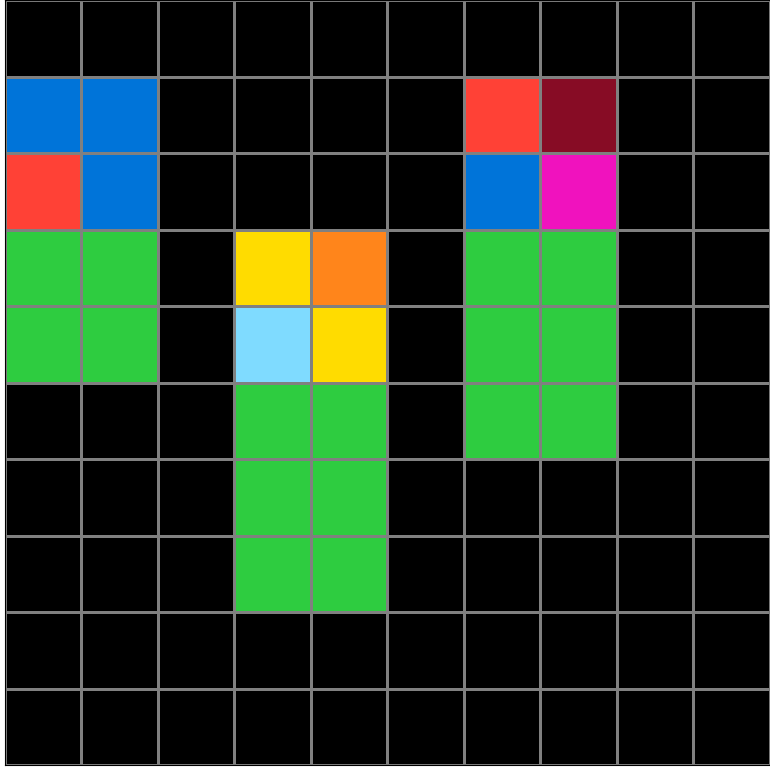

Participant 20
Initial description: The rule was to copy the input and place rows of green blocks under the existing shapes. The number of rows depended on how many unique colors were within the shapes. 2 unique colors would have 2 green rows, 3 unique with 3 rows, etc.
Final description: The rule was to copy the input and place rows of green blocks under the existing shapes. The number of rows depended on how many unique colors were within the shapes. 2 unique colors would have 2 green rows, 3 unique with 3 rows, etc.
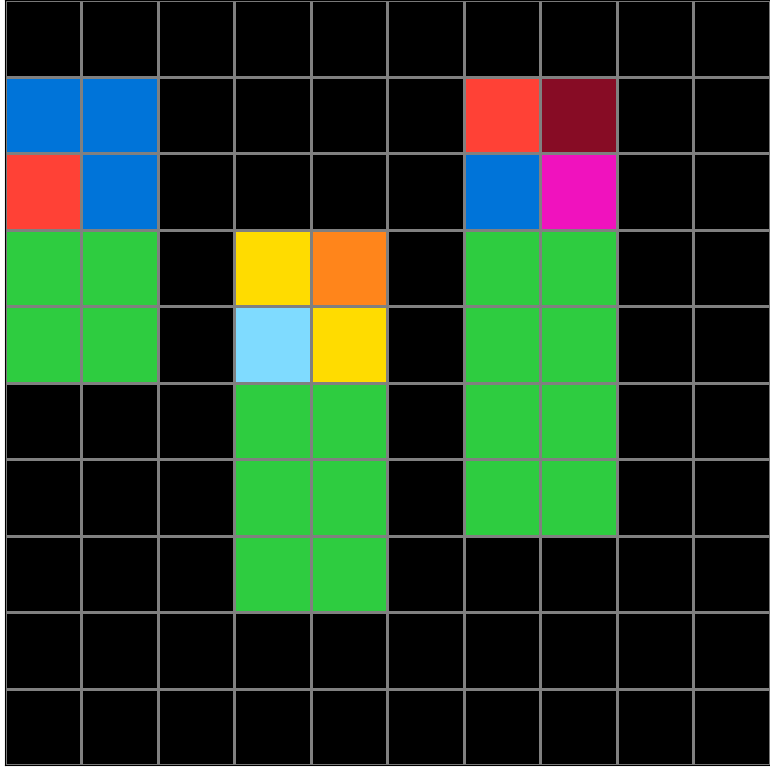
Participant 21
Initial description: Number of colors in each square is equal the the number of columns beflow
Final description: Number of colors in each square is equal the the number of columns beflow
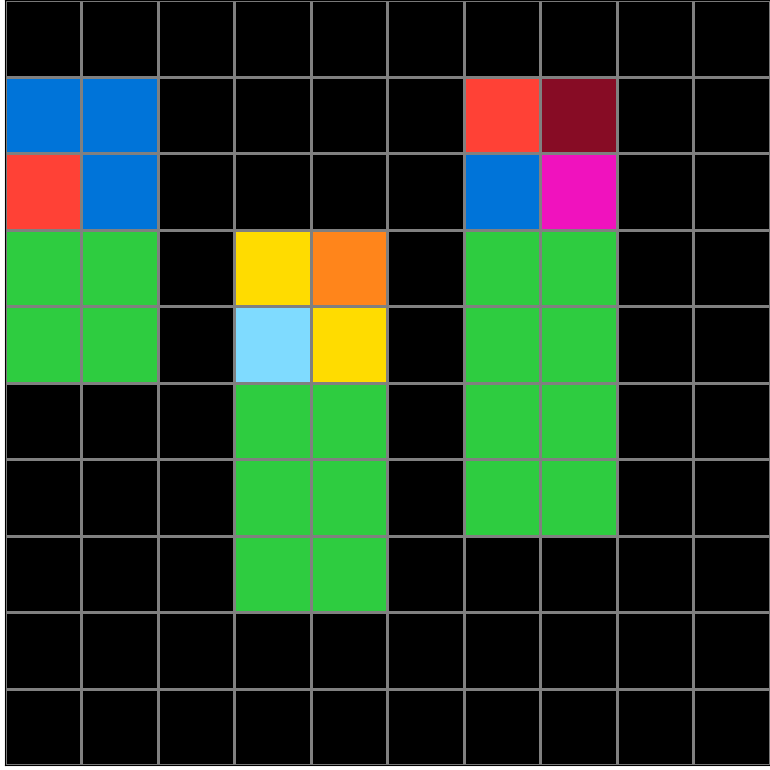
Participant 22
Initial description: A line (1x2) of green cells are added to the base of each object based on the number of different colors that make up that object. If 2 colors are present, 2 lines are added, if 4 colors are present, 4 colors are added.
Final description: A line (1x2) of green cells are added to the base of each object based on the number of different colors that make up that object. If 2 colors are present, 2 lines are added, if 4 colors are present, 4 colors are added.

Participant 23
Initial description: however many colors were included in each input block, use that number to make a green row directly under the block; 2 colors used = 2 rows of green, 3 colors used = 3 rows of green, etc.
Final description: however many colors were included in each input block, use that number to make a green row directly under the block; 2 colors used = 2 rows of green, 3 colors used = 3 rows of green, etc.
